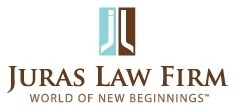H-2B Visa
H-2B visa category is for workers performing temporary non-agricultural service or labor. To determine whether the job is temporary, the U.S. Citizenship and Immigration Service looks at the nature of the employer’s need. The employer petitioning for a worker must establish that the need for the employee will end in the near, definable, future. The request for labor must be a one-time occurrence, a seasonal need, a peak load need, or an intermittent need.
(a) One-time occurrence: The petitioning employer must establish that it has not employed workers to perform the services or labor in the past and that it will not need workers to perform the services or labor in the future, or that it has an employment situation that is otherwise permanent, but a temporary event of short duration has created the need for a temporary worker.
(b) Seasonal need: The petitioning employer must establish that the services or labor is traditionally tied to a season of the year by an event or pattern and is of a recurring nature. The petitioner shall specify the period(s) of time during each year in which it does not need the services or labor. The employment is not seasonal if the period during which the services or labor is not needed is unpredictable or subject to change or is considered a vacation period for the petitioner’s permanent employees.
(c) Peak load need: The petitioning employer must establish that it regularly employs permanent workers to perform the services or labor at the place of employment and that it needs to supplement its permanent staff at the place of employment on a temporary basis due to a seasonal or short-term demand and that the temporary additions to staff will not become a part of the petitioner’s regular operation.
(d) Intermittent need: The petitioning employer must establish that it has not employed permanent or full-time workers to perform the services or labor, but occasionally or intermittently needs temporary workers to perform services or labor for short periods.
The petitioning employer must obtain approved temporary labor certification demonstrating that no U.S. workers are available and that the employment will not adversely affect wage rate and working conditions of similarly situated U.S. workers. Prior to submitting the application for labor certification, the employer must obtain a prevailing wage determination. The temporary employment certification must be filed no more than 90 calendar days and no less than 75 calendar days before the employer’s need. Concurrently with the filing the application for temporary labor certification, the employer must submit a job order to state workforce agency (e.g., Arizona Department of Economic Security). The content and posting of the job order must meet the requirements of regulations. The job order must be placed no more than 90 calendar days before the date of employer’s need and must be open until 21 days before the date of the employer’s need for the employment. The Department of Labor has now gone back to a post-filing recruitment model requiring that the recruitment begin after the labor certification is approved. Once the Department of Labor approves the job order and the labor certification, is issues a notice of acceptance. Within 14 days from the notice of acceptance, the employer must submit two ads on two separate consecutive days in a newspaper of general circulation. One must be a Sunday advertisement (with some exceptions).
The approved labor certification with the H-1B petition is filed with the U.S. Citizenship and Immigration Services. Petitions may only be approved for nationals whose country is on a yearly list designated by the Department of Homeland Security unless the Department of Homeland Security makes an exception as a matter of discretion.
For more information or to set up a consultation with Juras Law Firm, please call 480-425-2009 or contact us via our website.
